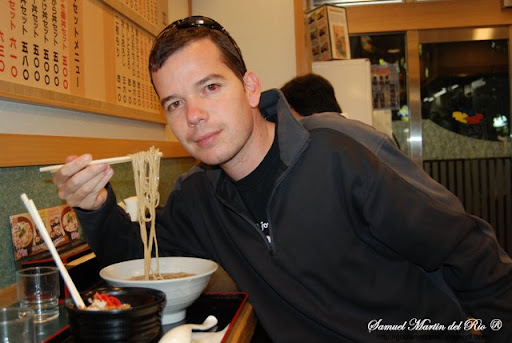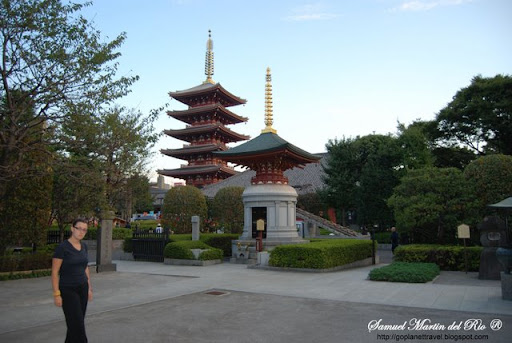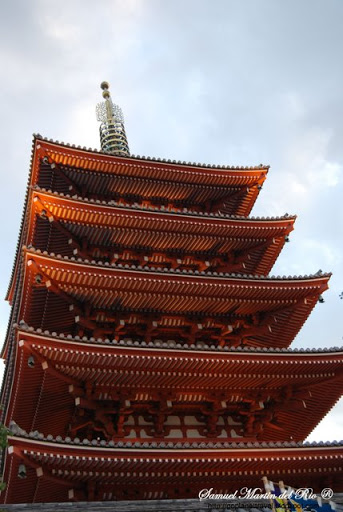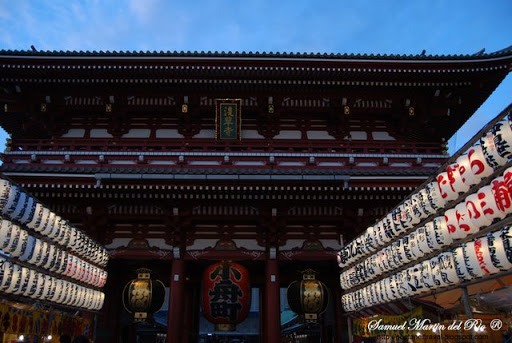My YOUTUBE video of TOKYO
Areas in Tokyo:
Adachi
Arakawa
Bunkyo
Chiyoda
Chuo
Edogawa
 Itabashi
Itabashi
Katsushika
Kita
Koto
Meguro
Minato
Nakano

Nerima
Ota
Setagaya
Shibuya
Shinagawa
Shinjuku
Suginami
Toshima
Tokyo, officially Tokyo Metropolis, is one of the 47 prefectures of Japan and is located on the eastern side of the main island Honshū. The twenty-three special wards of Tokyo, each governed as a city, cover the area that was once the city of Tokyo in the eastern part of the prefecture, totaling over 8 million people. The population of the prefecture exceeds 12 million. The prefecture is the center of the Greater Tokyo Area, the world's most populous metropolitan area with 35 million people and the world's largest metropolitan economy with a GDP of US$1.191 trillion at purchasing power parity in 2005.

Tokyo was described by Saskia Sassen as one of the three "command centers" for the world economy, along with London and New York City. This city is considered an alpha+ world city, listed by the GaWC's 2008 inventory and ranked fourth among global cities by Foreign Policy's 2008 Global Cities Index. In 2009 Tokyo was named the world's most expensive city for expatriate employees, according to the Mercer Human Resource Consulting and Economist Intelligence Unit cost-of-living surveys and named the third Most Liveable City and the World’s Most Livable Megalopolis by international lifestyle magazine Monocle.

Tokyo is the seat of the Japanese government and the Imperial Palace, and the home of the Japanese Imperial Family.
Tokyo was originally a small fishing village named Edo. In 1457, Ōta Dōkan built Edo Castle. In 1590, Tokugawa Ieyasu made Edo his base and when he became shogun in 1603, the town became the center of his nationwide military government. During the subsequent Edo period, Edo grew into one of the largest cities in the world with a population topping one million by the 18th century. It became the de facto capital of Japan even while the emperor lived in Kyoto, the imperial capital. After about 263 years, the shogunate was overthrown under the banner of restoring imperial rule. In 1869, the 17-year-old Emperor Meiji moved to Edo. Tokyo was already the nation's political and cultural center, and the emperor's residence made it a de facto imperial capital as well with the former Edo Castle becoming the Imperial Palace. The city of Tokyo was established, and continued to be the capital until it was abolished as a municipality in 1943 and merged with the "Metropolitan Prefecture" of Tokyo.
restoring imperial rule. In 1869, the 17-year-old Emperor Meiji moved to Edo. Tokyo was already the nation's political and cultural center, and the emperor's residence made it a de facto imperial capital as well with the former Edo Castle becoming the Imperial Palace. The city of Tokyo was established, and continued to be the capital until it was abolished as a municipality in 1943 and merged with the "Metropolitan Prefecture" of Tokyo.
Central Tokyo, like Osaka, has been designed since about the turn of the century (1900) to be centered around major train stations in a high-density fashion, so suburban railways were built relatively cheaply at street level and with their own right-of-way. This differs from many cities in the United States that are low-density and automobile-centric. Though expressways have been built in Tokyo, the basic design has not changed.

Tokyo went on to suffer two major catastrophes in the 20th century, but it recovered from both. One was the 1923 Great Kantō earthquake, which left 140,000 dead or missing, and the other was World War II. The bombing of Tokyo in 1944 and 1945, with 75,000 to 200,000 killed and half of the city destroyed, were almost as devastating as the atomic bombs of Hiroshima and Nagasaki combined. After the war, Tokyo was completely rebuilt, and showcased to the world during the 1964 Summer Olympics. The 1970s brought new high-rise developments such as Sunshine 60, a new and controversial airport at Narita in 1978, and a population increase to about 11 million.
Tokyo's subway and commuter rail network became one of the busiest in the world as more and more people moved to the area. In the 1980s, real estate prices skyrocketed during a real estate and debt bubble. The bubble burst in the early 1990s, and many companies, banks, and individuals were caught with mortgage backed debts while real estate was shrinking in value. A major recession followed, making the 1990s Japan's "lost decade" from which it is now slowly recovering. Tokyo still sees new urban developments on large lots of less profitable land. Recent projects include Ebisu Garden Place, Tennozu Isle, Shiodome, Roppongi Hills, Shinagawa, and the Marunouchi side of Tokyo Station. Buildings of significance are demolished for more up-to-date shopping facilities such as Omotesando Hills. Land reclamation projects in Tokyo have also been going on for centuries. The most prominent is the Odaiba area, now a major shopping and entertainment center. Various plans have been proposed for transferring national government functions from Tokyo to secondary capitals in other regions of Japan, in order to slow down rapid development in Tokyo and revitalize economically lagging areas of the country. These plans have been controversial within Japan and have yet to be realized.
recovering. Tokyo still sees new urban developments on large lots of less profitable land. Recent projects include Ebisu Garden Place, Tennozu Isle, Shiodome, Roppongi Hills, Shinagawa, and the Marunouchi side of Tokyo Station. Buildings of significance are demolished for more up-to-date shopping facilities such as Omotesando Hills. Land reclamation projects in Tokyo have also been going on for centuries. The most prominent is the Odaiba area, now a major shopping and entertainment center. Various plans have been proposed for transferring national government functions from Tokyo to secondary capitals in other regions of Japan, in order to slow down rapid development in Tokyo and revitalize economically lagging areas of the country. These plans have been controversial within Japan and have yet to be realized.
 Tokyo has numerous outlying islands, which extend as far as 1850 km from central Tokyo. Because of the islands' distance from the administrative headquarters of the metropolitan government in Shinjuku, local offices administer them.
Tokyo has numerous outlying islands, which extend as far as 1850 km from central Tokyo. Because of the islands' distance from the administrative headquarters of the metropolitan government in Shinjuku, local offices administer them.
The Izu Islands are a group of volcanic islands and form part of the Fuji-Hakone-Izu National Park. The islands in order from closest to Tokyo are Izu Ōshima, Toshima, Niijima, Shikinejima, Kozushima, Miyakejima, Mikurajima, Hachijojima, and Aogashima. Izu Ōshima and Hachijojima are towns. The remaining islands are six villages, with Niijima and Shikinejima forming one village.
 The Ogasawara Islands include, from north to south, Chichi-jima, Nishinoshima, Haha-jima, Kita Iwo Jima, Iwo Jima, and Minami Iwo Jima. Ogasawara also administers two tiny outlying islands: Minami Torishima, the easternmost point in Japan and at 1,850 km the most distant island from central Tokyo, and Okino Torishima, the southernmost point in Japan. The last island is contested by the People's Republic of China as being only uninhabited rocks. The Iwo chain and the outlying islands have no permanent population, but host Japanese Self-Defense Forces personnel. Local populations are only found on Chichi-jima and Haha-jima. The islands form the village of Ogasawara.
The Ogasawara Islands include, from north to south, Chichi-jima, Nishinoshima, Haha-jima, Kita Iwo Jima, Iwo Jima, and Minami Iwo Jima. Ogasawara also administers two tiny outlying islands: Minami Torishima, the easternmost point in Japan and at 1,850 km the most distant island from central Tokyo, and Okino Torishima, the southernmost point in Japan. The last island is contested by the People's Republic of China as being only uninhabited rocks. The Iwo chain and the outlying islands have no permanent population, but host Japanese Self-Defense Forces personnel. Local populations are only found on Chichi-jima and Haha-jima. The islands form the village of Ogasawara.
Tokyo has many museums. In Ueno Park there are four national museums: Tokyo National Museum, the country's largest museum and specializing in traditional Japanese art; the National Museum of Western Art; and the Tokyo National Museum of Modern Art, with its collections of Japanese modern art as well as over 40,000 Japanese and foreign films. Also in Ueno Park are the National Museum of Science and the public zoo. Other museums include the Nezu Art Museum in Aoyama; the Edo-Tokyo Museum in Sumida across the Sumida River from the center of Tokyo; and the National Diet Library, National Archives, and the National Museum of Modern Art, which are located near the Imperial Palace.
Museum, the country's largest museum and specializing in traditional Japanese art; the National Museum of Western Art; and the Tokyo National Museum of Modern Art, with its collections of Japanese modern art as well as over 40,000 Japanese and foreign films. Also in Ueno Park are the National Museum of Science and the public zoo. Other museums include the Nezu Art Museum in Aoyama; the Edo-Tokyo Museum in Sumida across the Sumida River from the center of Tokyo; and the National Diet Library, National Archives, and the National Museum of Modern Art, which are located near the Imperial Palace.
Tokyo has many theaters for the performing arts as well. These include national and private theaters for traditional forms of Japanese drama (like noh and kabuki) as well as modern dramas. Symphony orchestras and other musical organizations perform Western and traditional music. Tokyo also hosts modern Japanese and Western pop and rock music at venues ranging in size from intimate clubs to internationally known arenas like the Nippon Budokan. Many different festivals occur throughout Tokyo. Major events include the Sannō at Hie Shrine, the Sanja at Asakusa Shrine, and the biennial Kanda Festivals. The last features a parade with elaborately decorated floats and thousands of people. Annually on the last Saturday of July, an enormous fireworks display over the Sumida River attracts over a million viewers. Once cherry blossoms, or sakura, bloo
theaters for traditional forms of Japanese drama (like noh and kabuki) as well as modern dramas. Symphony orchestras and other musical organizations perform Western and traditional music. Tokyo also hosts modern Japanese and Western pop and rock music at venues ranging in size from intimate clubs to internationally known arenas like the Nippon Budokan. Many different festivals occur throughout Tokyo. Major events include the Sannō at Hie Shrine, the Sanja at Asakusa Shrine, and the biennial Kanda Festivals. The last features a parade with elaborately decorated floats and thousands of people. Annually on the last Saturday of July, an enormous fireworks display over the Sumida River attracts over a million viewers. Once cherry blossoms, or sakura, bloo m in spring, many residents gather in Ueno Park, Inokashira Park, and the Shinjuku Gyoen National Garden for picnics under the blossoms.
m in spring, many residents gather in Ueno Park, Inokashira Park, and the Shinjuku Gyoen National Garden for picnics under the blossoms.
Harajuku, a neighborhood in Shibuya, is known internationally for its youth style and fashion.
Cuisine in Tokyo is internationally acclaimed. In November 2007, Michelin released their guide for fine dining in Tokyo, garnering 191 stars in total, or about twice as many as its nearest competitor, Paris. Eight establishments were awarded the maximum of three stars, 25 received two stars, and 117 earned one star. Of the eight top-rated restaurants, three offer traditional Japanese fine dining, two are sushi houses and three serve French cuisine.
October 2009
Areas in Tokyo:

Adachi
Arakawa
Bunkyo
Chiyoda
Chuo
Edogawa
 Itabashi
ItabashiKatsushika
Kita
Koto
Meguro
Minato
Nakano

Nerima
Ota
Setagaya
Shibuya
Shinagawa
Shinjuku
Suginami

Toshima
Tokyo, officially Tokyo Metropolis, is one of the 47 prefectures of Japan and is located on the eastern side of the main island Honshū. The twenty-three special wards of Tokyo, each governed as a city, cover the area that was once the city of Tokyo in the eastern part of the prefecture, totaling over 8 million people. The population of the prefecture exceeds 12 million. The prefecture is the center of the Greater Tokyo Area, the world's most populous metropolitan area with 35 million people and the world's largest metropolitan economy with a GDP of US$1.191 trillion at purchasing power parity in 2005.

Tokyo was described by Saskia Sassen as one of the three "command centers" for the world economy, along with London and New York City. This city is considered an alpha+ world city, listed by the GaWC's 2008 inventory and ranked fourth among global cities by Foreign Policy's 2008 Global Cities Index. In 2009 Tokyo was named the world's most expensive city for expatriate employees, according to the Mercer Human Resource Consulting and Economist Intelligence Unit cost-of-living surveys and named the third Most Liveable City and the World’s Most Livable Megalopolis by international lifestyle magazine Monocle.

Tokyo is the seat of the Japanese government and the Imperial Palace, and the home of the Japanese Imperial Family.
Tokyo was originally a small fishing village named Edo. In 1457, Ōta Dōkan built Edo Castle. In 1590, Tokugawa Ieyasu made Edo his base and when he became shogun in 1603, the town became the center of his nationwide military government. During the subsequent Edo period, Edo grew into one of the largest cities in the world with a population topping one million by the 18th century. It became the de facto capital of Japan even while the emperor lived in Kyoto, the imperial capital. After about 263 years, the shogunate was overthrown under the banner of
 restoring imperial rule. In 1869, the 17-year-old Emperor Meiji moved to Edo. Tokyo was already the nation's political and cultural center, and the emperor's residence made it a de facto imperial capital as well with the former Edo Castle becoming the Imperial Palace. The city of Tokyo was established, and continued to be the capital until it was abolished as a municipality in 1943 and merged with the "Metropolitan Prefecture" of Tokyo.
restoring imperial rule. In 1869, the 17-year-old Emperor Meiji moved to Edo. Tokyo was already the nation's political and cultural center, and the emperor's residence made it a de facto imperial capital as well with the former Edo Castle becoming the Imperial Palace. The city of Tokyo was established, and continued to be the capital until it was abolished as a municipality in 1943 and merged with the "Metropolitan Prefecture" of Tokyo.Central Tokyo, like Osaka, has been designed since about the turn of the century (1900) to be centered around major train stations in a high-density fashion, so suburban railways were built relatively cheaply at street level and with their own right-of-way. This differs from many cities in the United States that are low-density and automobile-centric. Though expressways have been built in Tokyo, the basic design has not changed.

Tokyo went on to suffer two major catastrophes in the 20th century, but it recovered from both. One was the 1923 Great Kantō earthquake, which left 140,000 dead or missing, and the other was World War II. The bombing of Tokyo in 1944 and 1945, with 75,000 to 200,000 killed and half of the city destroyed, were almost as devastating as the atomic bombs of Hiroshima and Nagasaki combined. After the war, Tokyo was completely rebuilt, and showcased to the world during the 1964 Summer Olympics. The 1970s brought new high-rise developments such as Sunshine 60, a new and controversial airport at Narita in 1978, and a population increase to about 11 million.
Tokyo's subway and commuter rail network became one of the busiest in the world as more and more people moved to the area. In the 1980s, real estate prices skyrocketed during a real estate and debt bubble. The bubble burst in the early 1990s, and many companies, banks, and individuals were caught with mortgage backed debts while real estate was shrinking in value. A major recession followed, making the 1990s Japan's "lost decade" from which it is now slowly
 recovering. Tokyo still sees new urban developments on large lots of less profitable land. Recent projects include Ebisu Garden Place, Tennozu Isle, Shiodome, Roppongi Hills, Shinagawa, and the Marunouchi side of Tokyo Station. Buildings of significance are demolished for more up-to-date shopping facilities such as Omotesando Hills. Land reclamation projects in Tokyo have also been going on for centuries. The most prominent is the Odaiba area, now a major shopping and entertainment center. Various plans have been proposed for transferring national government functions from Tokyo to secondary capitals in other regions of Japan, in order to slow down rapid development in Tokyo and revitalize economically lagging areas of the country. These plans have been controversial within Japan and have yet to be realized.
recovering. Tokyo still sees new urban developments on large lots of less profitable land. Recent projects include Ebisu Garden Place, Tennozu Isle, Shiodome, Roppongi Hills, Shinagawa, and the Marunouchi side of Tokyo Station. Buildings of significance are demolished for more up-to-date shopping facilities such as Omotesando Hills. Land reclamation projects in Tokyo have also been going on for centuries. The most prominent is the Odaiba area, now a major shopping and entertainment center. Various plans have been proposed for transferring national government functions from Tokyo to secondary capitals in other regions of Japan, in order to slow down rapid development in Tokyo and revitalize economically lagging areas of the country. These plans have been controversial within Japan and have yet to be realized. Tokyo has numerous outlying islands, which extend as far as 1850 km from central Tokyo. Because of the islands' distance from the administrative headquarters of the metropolitan government in Shinjuku, local offices administer them.
Tokyo has numerous outlying islands, which extend as far as 1850 km from central Tokyo. Because of the islands' distance from the administrative headquarters of the metropolitan government in Shinjuku, local offices administer them.The Izu Islands are a group of volcanic islands and form part of the Fuji-Hakone-Izu National Park. The islands in order from closest to Tokyo are Izu Ōshima, Toshima, Niijima, Shikinejima, Kozushima, Miyakejima, Mikurajima, Hachijojima, and Aogashima. Izu Ōshima and Hachijojima are towns. The remaining islands are six villages, with Niijima and Shikinejima forming one village.
 The Ogasawara Islands include, from north to south, Chichi-jima, Nishinoshima, Haha-jima, Kita Iwo Jima, Iwo Jima, and Minami Iwo Jima. Ogasawara also administers two tiny outlying islands: Minami Torishima, the easternmost point in Japan and at 1,850 km the most distant island from central Tokyo, and Okino Torishima, the southernmost point in Japan. The last island is contested by the People's Republic of China as being only uninhabited rocks. The Iwo chain and the outlying islands have no permanent population, but host Japanese Self-Defense Forces personnel. Local populations are only found on Chichi-jima and Haha-jima. The islands form the village of Ogasawara.
The Ogasawara Islands include, from north to south, Chichi-jima, Nishinoshima, Haha-jima, Kita Iwo Jima, Iwo Jima, and Minami Iwo Jima. Ogasawara also administers two tiny outlying islands: Minami Torishima, the easternmost point in Japan and at 1,850 km the most distant island from central Tokyo, and Okino Torishima, the southernmost point in Japan. The last island is contested by the People's Republic of China as being only uninhabited rocks. The Iwo chain and the outlying islands have no permanent population, but host Japanese Self-Defense Forces personnel. Local populations are only found on Chichi-jima and Haha-jima. The islands form the village of Ogasawara.Tokyo has many museums. In Ueno Park there are four national museums: Tokyo National
 Museum, the country's largest museum and specializing in traditional Japanese art; the National Museum of Western Art; and the Tokyo National Museum of Modern Art, with its collections of Japanese modern art as well as over 40,000 Japanese and foreign films. Also in Ueno Park are the National Museum of Science and the public zoo. Other museums include the Nezu Art Museum in Aoyama; the Edo-Tokyo Museum in Sumida across the Sumida River from the center of Tokyo; and the National Diet Library, National Archives, and the National Museum of Modern Art, which are located near the Imperial Palace.
Museum, the country's largest museum and specializing in traditional Japanese art; the National Museum of Western Art; and the Tokyo National Museum of Modern Art, with its collections of Japanese modern art as well as over 40,000 Japanese and foreign films. Also in Ueno Park are the National Museum of Science and the public zoo. Other museums include the Nezu Art Museum in Aoyama; the Edo-Tokyo Museum in Sumida across the Sumida River from the center of Tokyo; and the National Diet Library, National Archives, and the National Museum of Modern Art, which are located near the Imperial Palace.Tokyo has many theaters for the performing arts as well. These include national and private
 theaters for traditional forms of Japanese drama (like noh and kabuki) as well as modern dramas. Symphony orchestras and other musical organizations perform Western and traditional music. Tokyo also hosts modern Japanese and Western pop and rock music at venues ranging in size from intimate clubs to internationally known arenas like the Nippon Budokan. Many different festivals occur throughout Tokyo. Major events include the Sannō at Hie Shrine, the Sanja at Asakusa Shrine, and the biennial Kanda Festivals. The last features a parade with elaborately decorated floats and thousands of people. Annually on the last Saturday of July, an enormous fireworks display over the Sumida River attracts over a million viewers. Once cherry blossoms, or sakura, bloo
theaters for traditional forms of Japanese drama (like noh and kabuki) as well as modern dramas. Symphony orchestras and other musical organizations perform Western and traditional music. Tokyo also hosts modern Japanese and Western pop and rock music at venues ranging in size from intimate clubs to internationally known arenas like the Nippon Budokan. Many different festivals occur throughout Tokyo. Major events include the Sannō at Hie Shrine, the Sanja at Asakusa Shrine, and the biennial Kanda Festivals. The last features a parade with elaborately decorated floats and thousands of people. Annually on the last Saturday of July, an enormous fireworks display over the Sumida River attracts over a million viewers. Once cherry blossoms, or sakura, bloo m in spring, many residents gather in Ueno Park, Inokashira Park, and the Shinjuku Gyoen National Garden for picnics under the blossoms.
m in spring, many residents gather in Ueno Park, Inokashira Park, and the Shinjuku Gyoen National Garden for picnics under the blossoms.Harajuku, a neighborhood in Shibuya, is known internationally for its youth style and fashion.
Cuisine in Tokyo is internationally acclaimed. In November 2007, Michelin released their guide for fine dining in Tokyo, garnering 191 stars in total, or about twice as many as its nearest competitor, Paris. Eight establishments were awarded the maximum of three stars, 25 received two stars, and 117 earned one star. Of the eight top-rated restaurants, three offer traditional Japanese fine dining, two are sushi houses and three serve French cuisine.
October 2009
You have read this article with the title TOKYO, JAPAN. You can bookmark this page URL http://oinsweden.blogspot.com/2009/10/tokyo-japan.html. Thanks!
Write by:
AN - Tuesday, October 27, 2009







.jpg)


Comments "TOKYO, JAPAN"
Post a Comment